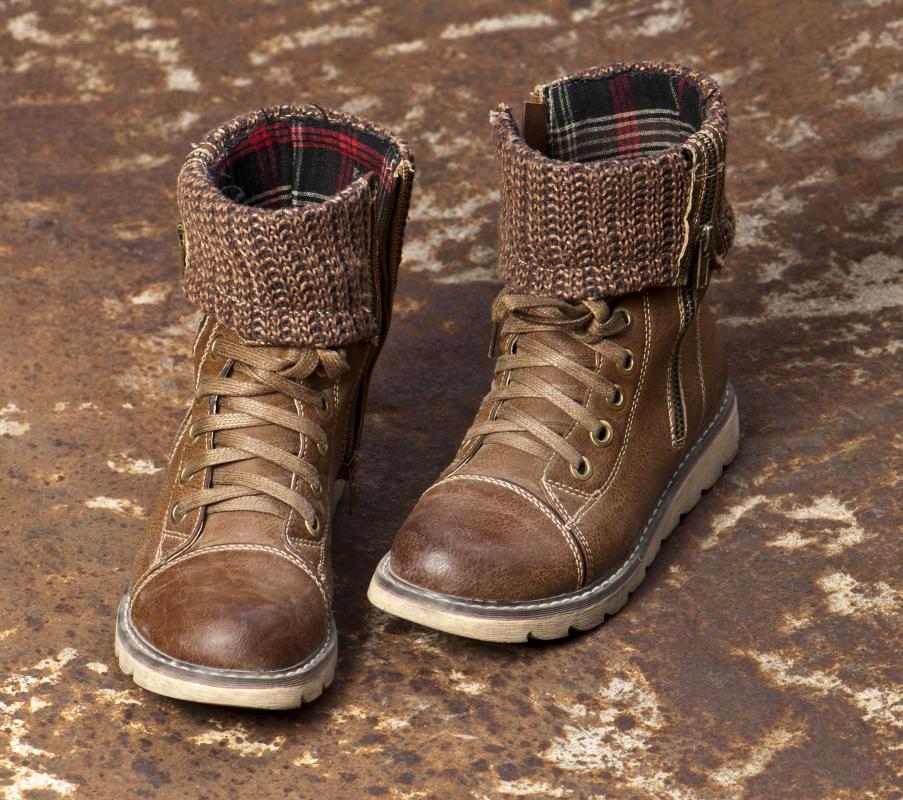At WiseGEEK, we're committed to delivering accurate, trustworthy information. Our expert-authored content is rigorously fact-checked and sourced from credible authorities. Discover how we uphold the highest standards in providing you with reliable knowledge.
What is Tanned Leather?
Tanned leather is an animal hide which has been subjected to a chemical process which retards decay. Without tanning or some form of treatment, skins will rot and become putrid, making them useless for any application other than being disgusting. The practice of tanning has been used in many cultures to cure hides for centuries, and a variety of techniques to make tanned leather have evolved. Once tanned, leather can be treated to make it water resistant, if desired, and then shaped into an assortment of forms from boots to scabbards.
Like any body part, skins will naturally rot if exposed to the elements without intervention. Early humans discovered that leather could be soaked in tannin, a compound which is naturally present in bark, to preserve it. Tannin is highly acidic, and it forms bonds with the natural collagen in a skin to preserve it, by helping it resist bacterial decay. This makes skins and furs usable, as it will preserve them for an extended period of time; examples of tanned leather which are thousands of years old have been found on archaeological sites. Most processes for curing leather are called “tanning,” in a reference to the tannins which were originally used to cure leather.

The tanning process is rather unpleasant and fairly stinky. Traditionally, tannery facilities were banished to the outskirts of settlements because of the stench. With the modernization of tanning, the process has gotten a little less odorous, but it is still not very enjoyable. The manufacture of tanned leather starts with curing and cleaning skins to remove any fleshy material. The skins are soaked in a bath which will encourage the absorption of tanning agents, and then the tanning agent is added before the leather is rinsed, dried, and treated to become flexible. Once tanned, leather may be cut into a wide assortment of thicknesses, depending on the potential use.

Leather which has been tanned in a traditional way, with vegetable tannins, is usually called vegetable tanned leather. Leather can also be tanned in chemicals, which may allow tanneries to introduce novel colors to the leather during the treatment process, and tend to yield a more durable final product. Another form of leather is called rawhide, and it does not involve tanning at all. Instead, skins are scraped clean and treated with lime before being slowly dried. Rawhide is not as flexible as tanned leather, but it still has a number of potential applications.

Many people who are interested in leather working learn how to tan leather, so that they understand the steps behind the process. Making your own tanned leather may also be preferable in some cases because it allows an artisan more control over the final product. Since the tanning of hides is such a lengthy process, however, most consumers prefer not to get involved.
AS FEATURED ON:
AS FEATURED ON:














Discussion Comments
I didn't know that some leather products are tanned with chemicals, while some are made from vegetable tanned leather hides.
I try to stay away from things that use unnecessary chemicals as much as possible. I'm glad I know this about leather now, so I can try to make sure I only buy vegetable tanned leather products, in the future.
Is there a way you can tell, when making a purchase, what kind of tanning process was used?
Wow, I guess I never really thought about the process of turning an animal skin into wearable leather. It sounds like it is far from pleasant. The next time I put on a leather jacket, I'll have a lot more appreciation for what people have to go through to make it. It's certainly not a job I would ever want to have.
Post your comments